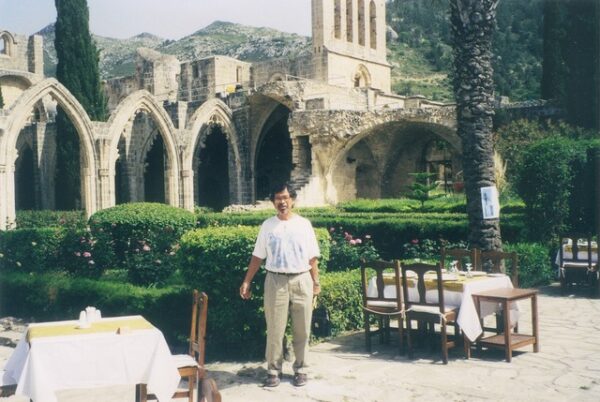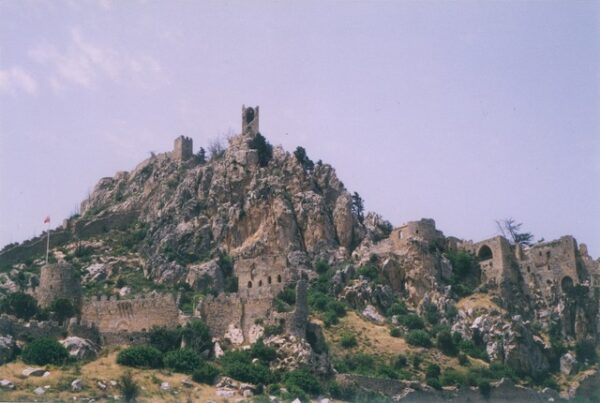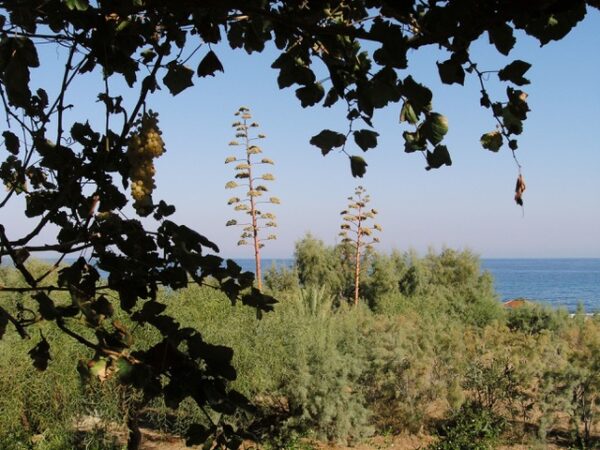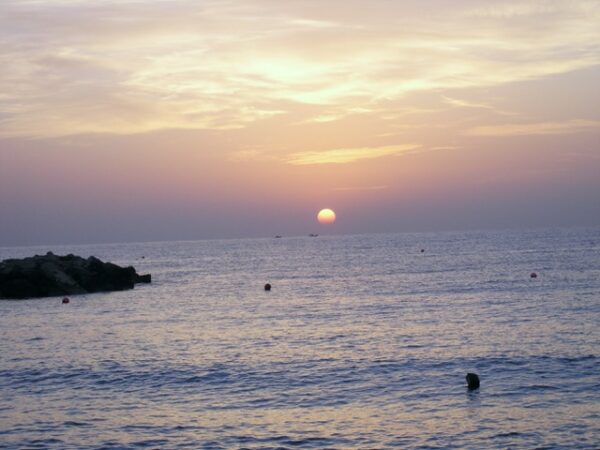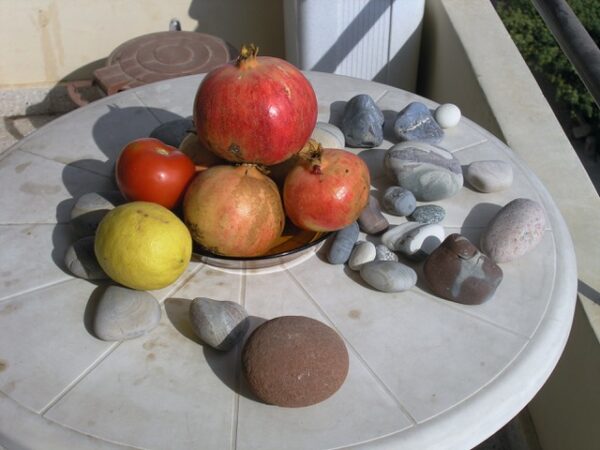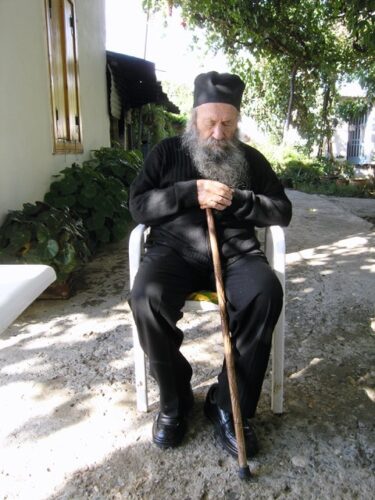You’ll see these Buddhist monks everywhere in Laos. Young men who probably left their families when they were children to join a temple.
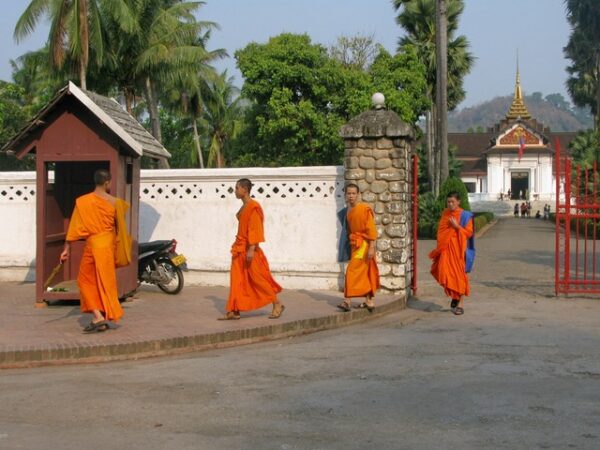
As you go around, you’ll see massage spas ($10 for a 2-hour session), night markets (they open at about 4 pm), craft training centers (I bought a buddha made of teak carved by one of the disabled artisans), stalls serving food and Buddhist temples and “fish pedicure.”
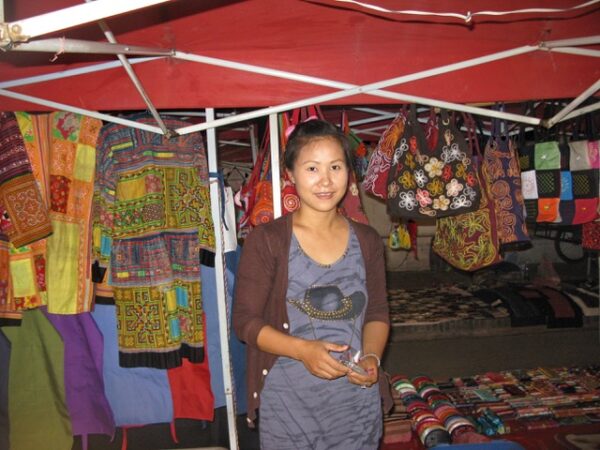
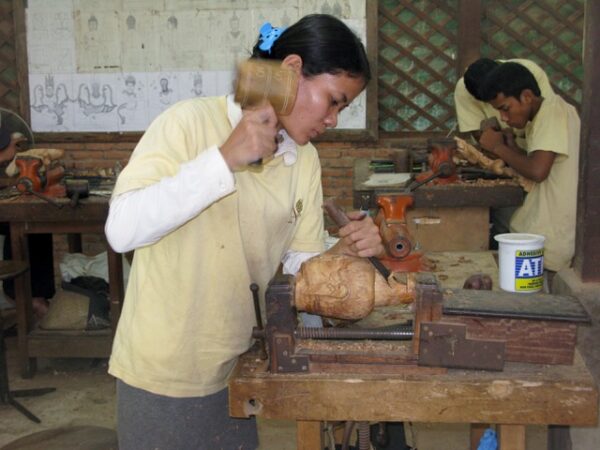
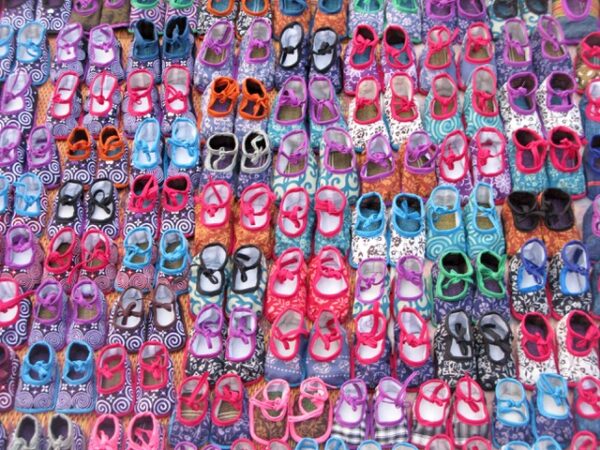
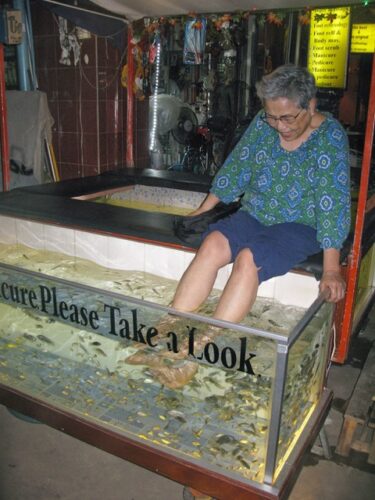
You’ll also meet many backpackers from Europe, young adventurous people who stay in hostels and guesthouses and move in packs.
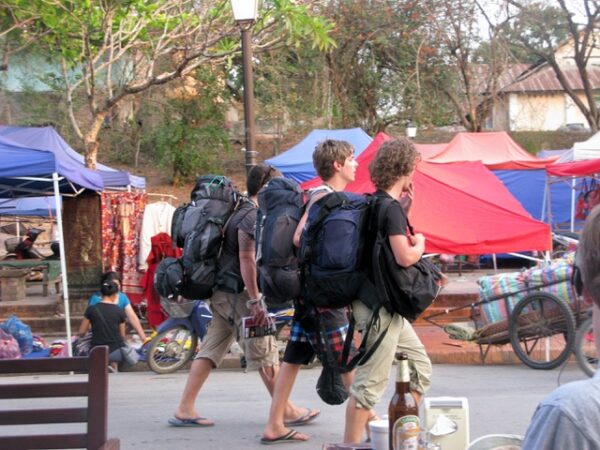
It takes almost 2 hours by boat on the Mekong from Luang Prabang to get to the Temple of a Thousand Buddhas up north. The trip takes you between Thailand and Laos and through picturesque landscapes. The temple was built inside a cave on the side of a mountain in the middle of nowhere.
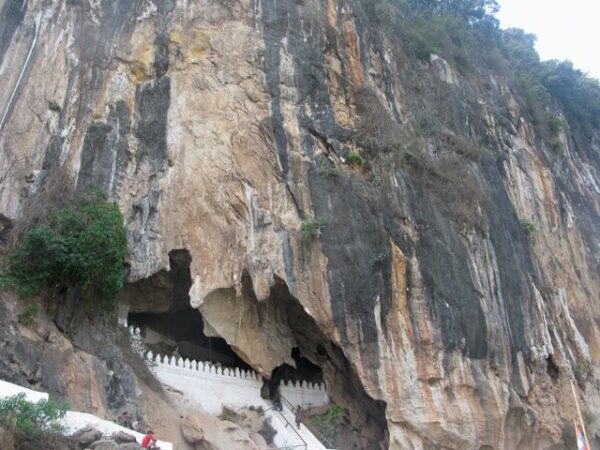
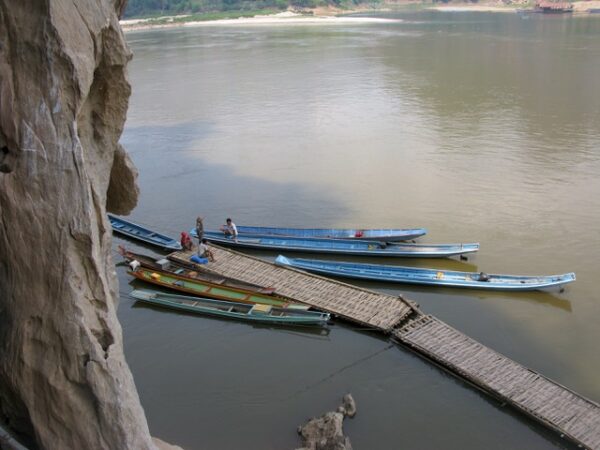
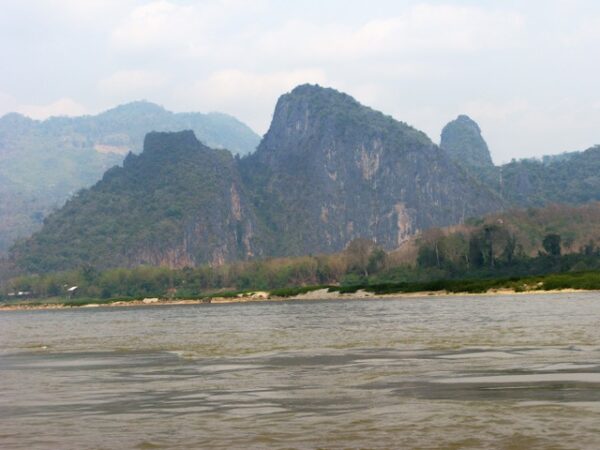
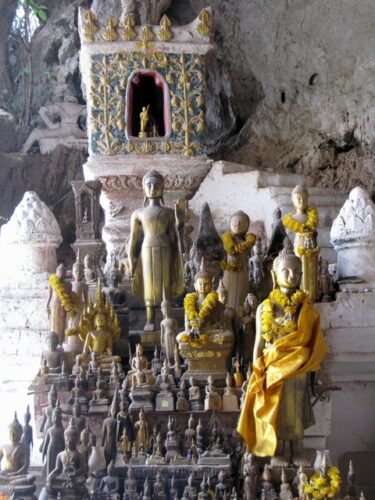
Sharing photos of Shiva, Lord of the Dance, and a long quote from Hinduism Today Magazine on the symbolism of the statue. Lolit and I did a pilgrimage to the Batu Cave in Kuala Lumpur 10 years ago. You climb 245 steps past the aggressive monkeys to the actual temple inside the huge cave. The cave is really HUGE, like a cathedral. The guide said that for every step you took, one sin is forgiven! :) Very few pilgrims were there at the time of Ramadan. I do not think I could climb those stairs anymore. It’s difficult to visit these places now in the time of the Covid 19 pandemic. Many of us, I am sure, can only look back in nostalgia at all these places and recall the times we were free to travel. The photo of the 7-foot Shiva Nataraja was taken from the desk in my study. You’ll also see a lingam, peacock feathers, a phurba and a few other artifactsfrom different countries.
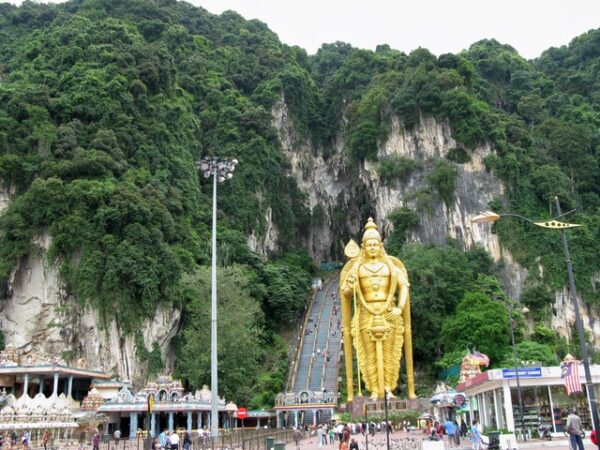
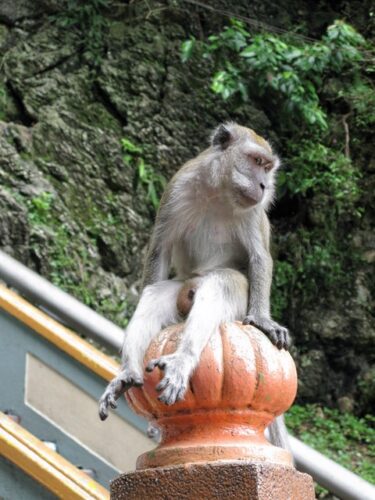
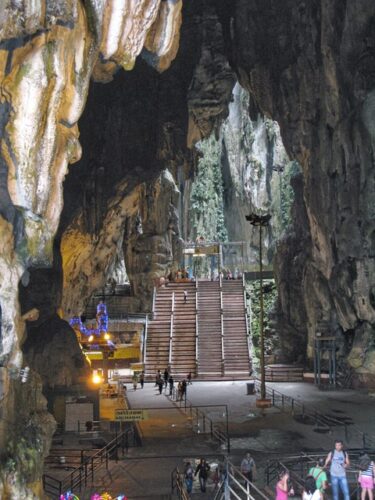
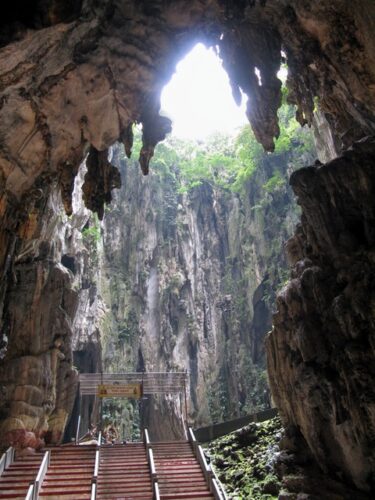
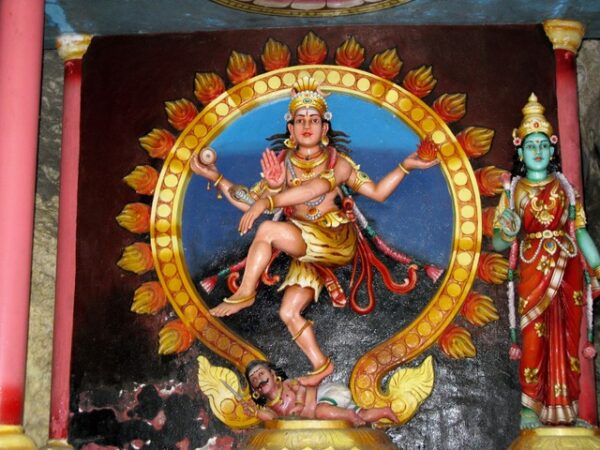
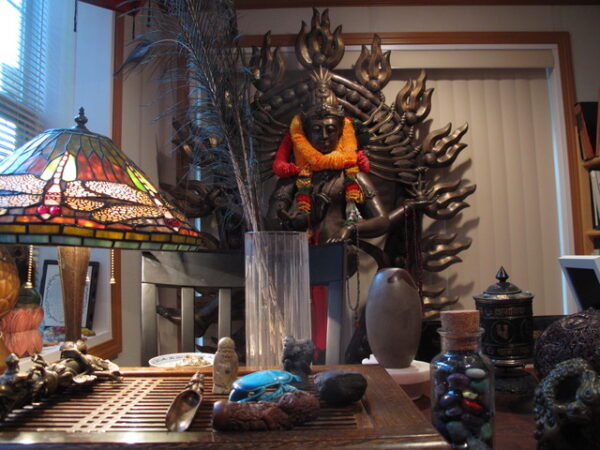
Shiva Nataraja/Lord of the Dance
- From Hinduism Today Magazine, April, May, June 2020 issue
NATARAJA, “King of Dance,” is a depiction of God as the Cosmic Dancer. Perhaps Hinduism’s richest and most eloquent symbol, Nataraja represents the Primal Soul and the power, energy and life of all that exists. This is God’s intricate state of being in Manifestation. The dance is the dance of the entire cosmos. Nataraja is chosen to depict the Divine because, in dance, that which is created is inseparable from its creator, just as the universe and soul cannot be separated from God. Dance and Dancer are one. Nataraja is also stillness and motion wrought together. The stillness speaks of the peace and poise that lies deep within us all. The intense motion, depicted by His hair flying wildly in all directions, is an intimation of the fury and ferocity, the violent vigor, which fills this universe wherein we dwell. The implication of these opposites is that God contains and allows them both, that there is divine purpose at work in our life, whether we find ourselves engaged in its beauty or its “madness.”
Nataraja’s Dance, or all that happens, is composed of an ever-flowing combination of the five foundational actions: 1) creation, or emanation, represented by His upper right hand and the drum, from which the Primal Sound issues forth, promulgating the rhythms and cycles of creation; 2) preservation, represented by His lower right hand in a gesture of blessing, abhaya mudra, saying “fear not;” 3) destruction, dissolution or absorption, represented by the fire in His upper left hand; 4) obscuring grace, the power which hides the truth, thereby permitting experience, growth and eventual fulfillment of destiny, represented by His right foot upon the prostrate figure Apasmarapurusha – the principle of ignorance, or ego; 5) revealing grace – which grants knowledge and severs the soul’s bonds – represented by Siva’s left foot, and by His lower left hand, held in gajahasta (“elephant trunk”) mudra, inviting approach. These five cosmic activities are sometimes personalized respectively as Brahma, Vishnu, Rudra, Maheshvara, and Sadasiva. – or as Sadyojata (creation), Vamadeva (preservation), Aghora (reabsorption), Tatpurusha (obscuration) and Ishana (revealing grace).
The ring of fire in which Nataraja dances is the hall of consciousness, chitsabha; in other words, the light-filled heart of man, the central chamber of the manifest cosmos God dances the universe into and out of existence, veiling Ultimate Reality for most, unveiling it for devotees who draw near and recognize Ultimate Reality in the chamber of their own inner being.
Here is what I wrote about Cyprus on my last visit in 2005:
P.S. Just got back from the North: At the Green Line the guard said that tourists could stay in the North for up to 3 months without further documentation. I stayed from Wednesday to Friday, mostly up in the Karpaz peninsula in the Northeast territory. The area has wonderful terrain, empty beaches, unpolluted air, the Kyrenian mountain range and clear jade water of the Mediterranean. There’s little industry, no radar and mobile phone towers. The cuisine was simple but excellent—olives marinated in olive oil with garlic, lemon and coriander seeds, goat cheese/halloumi, grilled meat (chicken, lamb and beef), squid, octopus and fish (chipura, sea bream, is the favorite). I stayed at two hotels, both on the coast. One of them was run for three generations by a Turkish Cypriot family who raise their own sheep and vegetables. It was comforting to see the cook take a stroll to the nearby farm to harvest green beans, steak tomatoes and spring onions for dinner. The other is owned and run by new immigrants from Anatolia, who probably took over the property formerly owned by Greek Cypriots after the country was invaded by Turkey in 1974.
The Karpaz is still generally unspoiled, although the few developments are an eyesore. A sandy beach on Famagusta Bay was undergoing the hasty construction of several hotels plus a casino: in a year or two, it will look like a miniature Reno. The old couple that owns a ramshackle tienda-cum-bar at the end of the only road will probably not know what hit them when the multi-nationals descend upon this hitherto tranquil retreat. There are infrequent tourist buses; most transport is by rental car, for now. You’ll see miles and miles of virgin land along the Mediterranean Sea and every so often you would encounter a herd of wild donkeys. In the summer and fall, there are sea turtles laying eggs on the shore. My guide told me that the Greek South was like this 10 years ago, but has since then gone insanely commercial, with developments rising up most everywhere, especially on the coast, mountains are being gouged to make way for hotels, roads, houses and golf courses.
In the Karpaz, there are abandoned Greek Orthodox churches from the war of 1974. The Monastery of San Andreas, probably one of the best Greek Orthodox Churches in Cyprus, is in a sad state of disrepair, looking forlorn and pathetic against a breathtaking landscape. I saw an old church that was actually being used as a mosque, reminiscent of some churches in Toledo and Avila in Spain that carried both Christian and Muslim designs and motifs.
In the South there are numerous abandoned mosques. I did not see any still in operation, although I heard that the Al-Kebir Mosque in Larnaca is still in use by Muslims.
Both sides speak of ugly deeds done by the other—massacres and disappearances. I met the owner of a coffee shop in the Karpass who narrated the story of his own journey as a child from a small village in the South, how he and 30,000 to 40,000 other Muslims had to take refuge in the British compound, airlifted to Turkey and eventually re-settled in the North. Almost similar stories were told by Greek Cypriots who were driven at gunpoint to the South from their homes in the North. After the opening of the borders last year, a Greek Cypriot couple found Turks from Turkey in possession of their farm home, and their wedding photos were still sitting in the bedroom undisturbed. I wrote poems about these stories, but it seems all so futile. How does a writer capture the anguish and the frustration and pain of both sides in this endless war?
In villages on both sides of the Green Line men were rounded up in the night … There are still bodies that are not accounted for 30 years after the war… I walk in the country roads and see these abandoned stone houses, doors and shutters falling on their hinges, and wonder if under the floor or in the ancient olive grove nearby there are skeletons. And those old men stooped over their coffee in the village square, what do they know about what happened during those raids that nobody on either side admits?
Called the island of Aphrodite, the goddess of love, Cyprus has probably never experienced real peace at any time perhaps for the last 1000 years or more. You read its long history of colonization and from the names you encounter, you see the oscillations of conquest and colonization—Egypt, Assyria, Persia, Cato, Anthony, Cleopatra, Constantine, Alexander, Ottoman, Byzantine, Venetians, Turks, Greeks, UK. Each generation seems to have suffered war, invasion, strife. After 1974, the Green Line was drawn east-west; in many places it is actually a barbed wire fence running the length of this picturesque country of about 800,000 people. In a real, sanguinary way, this little island country mirrors the larger struggle of the world, the religious and political wars, the physical, psychic and emotional wounds that people all over inflict on each other, the failure to forgive and the limits of human love.
There have been calls for reunification but where do they begin? Last May at a referendum the North voted Yes while the South voted No to the Annan Plan. Indeed how do they start all over again?
Please note: This essay was written in 2004 – some of the information contained within it may have changed since then.
Originally written for and published by “Our Own Voice” (www.oovrag.com), the literary ezine for Filipino writers in the diaspora.
